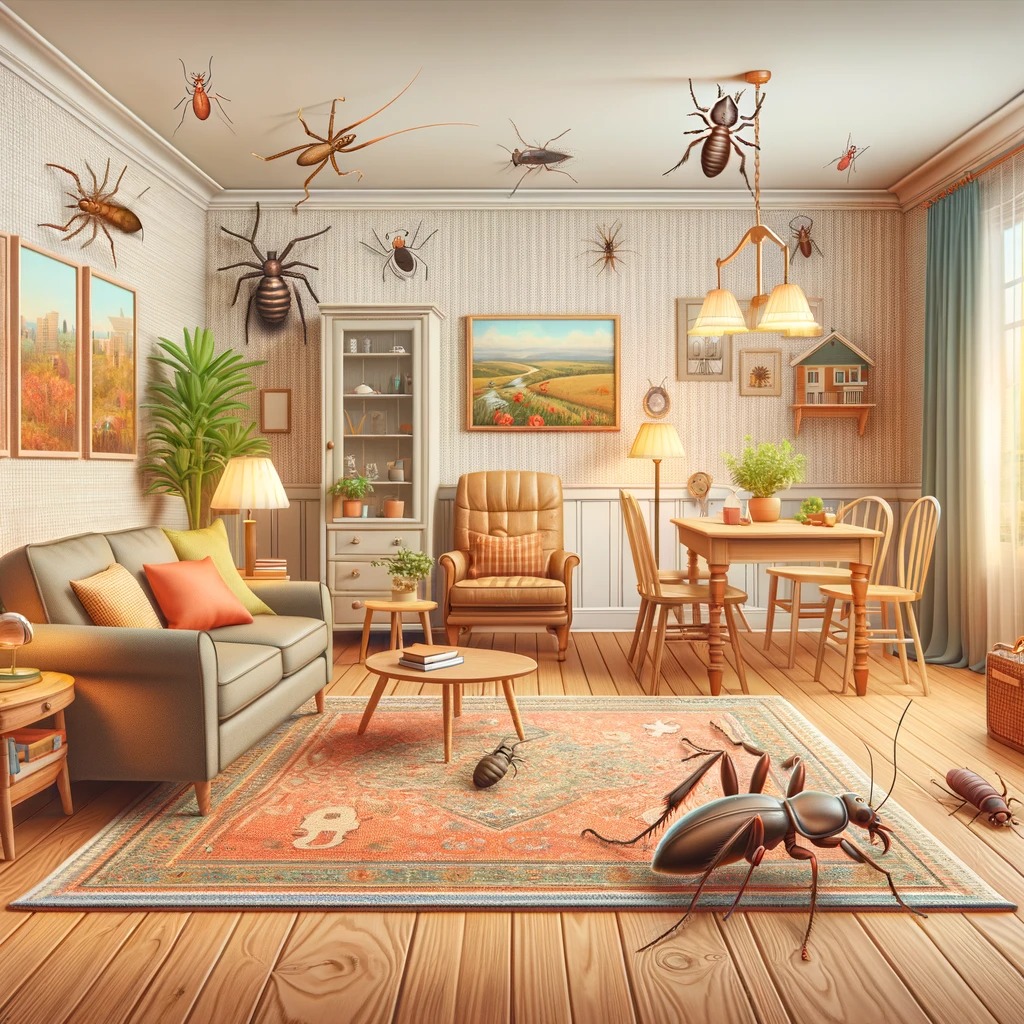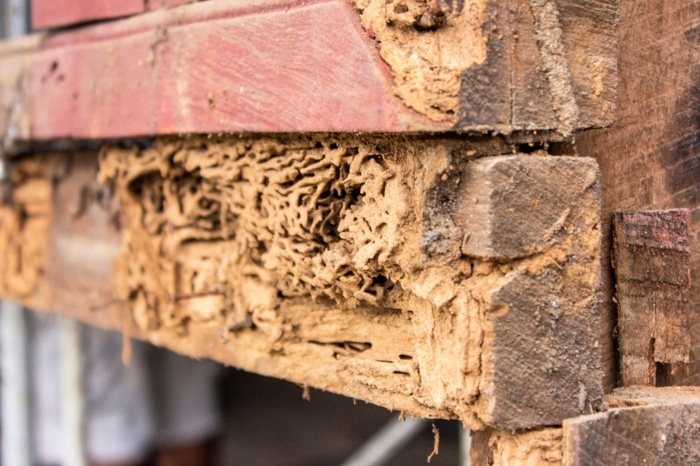In Kansas, like in many other regions, homeowners often face the challenge of dealing with a variety of common house bugs. These pests not only pose a nuisance but can also potentially harm your living environment. Understanding the types of bugs that commonly invade homes in Kansas and how to manage them is crucial for maintaining a comfortable and pest-free household. This guide aims to provide detailed insights into the most common house bugs in Kansas, offering identification tips and management strategies to help you effectively tackle these unwelcome visitors.
Don’t let pests take over your home! Act now and schedule a professional pest control service to get rid of unwanted guests.
Common House Bugs in Kansas
Kansas homes are susceptible to a variety of common house bugs, each with unique characteristics and behaviours. Some of the most prevalent include:
Spiders:
Often found in dark, undisturbed areas of the home. While most are harmless, it’s important to be aware of the more dangerous species, like the brown recluse, which is native to Kansas.
Silverfish:
These small, silver-grey bugs are commonly found in humid areas of the house, like bathrooms and basements. They feed on starches, damaging books, wallpaper, and clothing.
Bed Bugs:
A growing problem in many areas, bed bugs are small, reddish-brown insects that feed on human blood, often leading to itchy bites.
Centipedes and Millipedes:
These multi-legged creatures are often found in damp areas of the home. While generally harmless, their presence can be unsettling.
Each of these bugs requires specific strategies for effective management. Regular home maintenance, such as sealing cracks and keeping areas dry and clean, can significantly reduce the likelihood of infestations.
Flying Insects in Kansas
Flying insects are a common concern in Kansas homes, particularly during certain times of the year. Some of the most common flying insects include:
House Flies:
These are perhaps the most common flying insects in homes. They are attracted to food waste and other decaying organic matter.
Mosquitoes:
Often found near standing water, mosquitoes are not only a nuisance but also potential carriers of diseases.
Moths:
Some species of moths can be problematic in homes, especially pantry moths that infest food and clothes moths that damage fabrics.
Wasps and Bees:
While beneficial for the environment, their nests can be a hazard, especially for those with allergies to stings.
Distinguishing between these flying insects is essential for proper management. For example, methods for dealing with house flies may not be effective against mosquitoes. Therefore, identifying the specific type of flying insect infesting your home is the first step towards implementing an effective control strategy.
Insects in Kansas: Seasonal Variations
In Kansas, the presence and activity of house bugs can vary significantly with the seasons, impacting the strategies for managing them.
Spring and Summer:
These warmer months see an increase in the activity of many insects. Ants become more active, searching for food to support their colonies. Mosquitoes breed in stagnant water, and flies are attracted to open windows and the scent of barbecues. This is also the time when bees and wasps are most active, building nests and foraging for food.
Fall:
As the weather cools, many insects, such as spiders and certain beetles, seek warmth and shelter indoors. Homeowners might notice an increase in these bugs inside their homes during this season.
Winter:
Most insect activity decreases in the cold months. However, some, like the brown recluse spider, can survive indoors in warmer spots of the house.
Understanding these seasonal patterns helps in preparing and implementing targeted pest control measures at the right time. For example, sealing entry points in the fall can prevent insects from seeking shelter in your home during the winter.
Types of Ants in Kansas
Kansas is home to several ant species, each requiring specific control strategies. Some of the most common types include:

Carpenter Ants:
Large and primarily black, these ants are known for damaging wood structures. They create nests inside wood, which can lead to structural damage over time.
Pavement Ants:
Small and dark-coloured, these ants typically nest under stones, sidewalks, and at the edges of pavements. They are often seen trailing to and from food sources.
Odorous House Ants:
Recognizable by the unpleasant odour they release when crushed, these ants are attracted to sweet substances and can be persistent household pests.
Field Ants:
Often mistaken for carpenter ants, field ants prefer to nest outdoors in soil but can venture indoors for food.
Each species of ant requires a unique approach to management. For example, baiting strategies that work for odorous house ants may not be effective against carpenter ants, which require more targeted measures to eliminate their nests.
Check out our post about ant in constructed properties.
Cockroach in Kansas: Identification and Control
Cockroaches are one of the most unwelcome pests in any home due to their resilience and potential to spread diseases. In Kansas, the most common species include:
German Cockroach:
Small and light brown, these are often found in kitchens and bathrooms. They breed rapidly and can be difficult to control once established.
American Cockroach:
Larger and darker, these are often found in basements and sewers. They are more likely to venture indoors in search of food and warmth.
Effective cockroach control involves a combination of sanitation, exclusion, and, when necessary, chemical treatments. Keeping the home clean, particularly in areas where food is stored and prepared, is crucial. Sealing cracks and crevices can prevent cockroaches from entering the home. In cases of severe infestation, professional pest control services may be required to fully eradicate the problem.
Preventive Measures and Effective Home Treatments
Preventing common house bugs in Kansas is often more effective than trying to eliminate them after they’ve established themselves. Here are key preventive measures and home treatments:
Regular Cleaning:
Regular vacuuming, dusting, and decluttering can significantly reduce the likelihood of bug infestations by removing potential food sources and hiding spots.
Sealing Entry Points:
Inspect your home for cracks, holes, and gaps, especially around doors, windows, and utility entries. Sealing these can prevent many types of bugs from entering.
Proper Food Storage:
Store food in airtight containers and avoid leaving pet food out overnight. This is particularly important for preventing ants and cockroaches.
Moisture Control:
Many bugs are attracted to moisture. Fix leaky pipes and ensure your home has good ventilation to discourage pests like silverfish and cockroaches.
Natural Repellents:
For a non-chemical approach, consider using natural repellents like diatomaceous earth for crawling insects and essential oils like peppermint or citronella for flying insects.
Chemical Treatments:
In cases where infestations are severe, chemical treatments may be necessary. It’s important to use these products according to the label instructions and consider the safety of children and pets.
Conclusion
Dealing with common house bugs in Kansas requires a combination of vigilance, preventive measures, and effective treatments. By understanding the types of pests typical in the area and implementing regular maintenance and cleaning routines, you can greatly reduce the likelihood of infestations. Remember, early intervention is key to managing pest problems effectively.
For challenging infestations, or if you’re unsure about the best course of action, don’t hesitate to seek professional advice. Pest control experts can provide tailored solutions to keep your home pest-free and ensure a comfortable living environment. Stay proactive in your pest control efforts and enjoy a cleaner, safer home.





